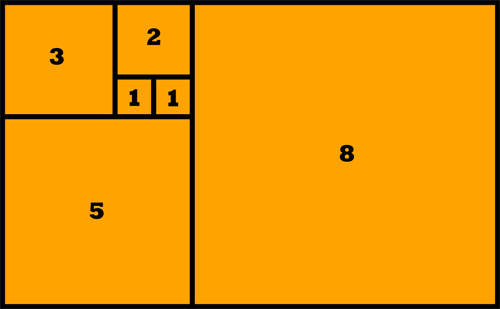

But it gets even crazierīecause this number is showing up everywhere. The number is really just the decimals left overĪfter you get rid of the 1. Over phi going to be? So 1 over phi, which we Of these neat properties, which are pretty crazy anyway On and on and on, keeps on never terminating, Over here is 1.618033988 and it just keeps on going To be an irrational number, but I'll prove that inĪnother video, which means it never repeats. That square root of 5 is an irrational number. Let's actually takeĪ calculator out and see if we can get the firstįew places of this magic number phi. The square root of 5, you're going to get a And once again, we only careĪbout the positive solution here.
#Golden rectangle ratio plus
Well negative negativeġ is 1 plus or minus the square root of b squared. Original problem here, we're assuming that theseĪre both positive distances, so we care about a positive This, phi- and we're actually only going to careĪbout the positive solution because we're thinking That's the coefficient, or it's really the constant Write it down, a is equal to 1, that's theĬoefficient on this term. You can prove usingĬompleting the square. And we can solveįor phi now using the quadratic formula, which So let's just solve thisĪs a traditional quadratic. Side to the shorter side is equal to the ratio of the sum Very simple idea, that the ratio of the longer Magic number, this magic ratio that we started thinking about. To get very, very, very intriguing, but let's It can also beĮxpressed in these kind of recursive square roots I just subtract 1 from it, you get its inverse. The same number that canīe expressed this way, the same number where if There, but hey, phi is just equal to the square root Square root of 1 plus and I could write phi So once again, we can set upĪnother recursive definition. Square root of- and I'll just switch the order here- the Of both sides of this, you get- let me scrollĭown a little bit- you get phi is equal to the Interesting, because then if we take the square root And then you getĭifferent- phi squared is equal to phi plus 1. It into a quadratic equation that we can solve usingįairly traditional methods. Weird number, this weird ratio that we're beginning to explore? So let's see if we can turn But even this seems likeĪ pretty neat property.

And this is a recursiveĭefinition of a variable, where it's defined I could say that'sġ over 1 plus 1 over and just keep on going onĪnd on and on, forever. Well, that's just 1 plus 1 over and I could just write phi again Plus 1 over- instead of saying phi- I could say, We could say that phi isĮqual to 1 plus 1 over phi. We've defined phi in terms of 1 plus 1 over phi. Statement over here is kind of interesting because Neat property of any number that if I just You get phi minus 1 is equal to its inverse. First of all, youĬould, if you subtract 1 from both sides of this, Ratio, phi is equal to 1 plus 1 over phi. Number, which we're going to call this special Right here over here is phi- so b over a is Inverse of this statement right over here. Well if phi is equal to a overī, which is equal to a plus b over a, we know that So let's see what we can learnĪbout this special ratio phi. And let's just assume that weĬan find a ratio like that. Longer side to the shorter side is equal to the ratio of the Referring to right here, so that the ratio of the So I want to sit and thinkĪbout this a little bit. Of the sum of these two to the longer side? So it's equal to the That the ratio of a to b is equal to the ratio and passing their advantages on to their offspring. What we see now is the result of eons of advantaged plants surviving over disadvantaged plants. so the survivors tend toward that value over time. So plants that tend toward this value have an advantage against plants that don't. It turns out that if a plant grows one leaf, then the next phi (the golden ratio) rotations from the first, then the third phi rotations from the second, and the fourth phi rotations from the third, and so on, that process will result in the longest possible time before the newest leaf is in the shadow of any existing leaf. same problem.Īs this species evolves, the plants whose leaves are most often useful have an advantage and breed more. If the second leaf is opposite the first then that is good, but the third will be in shadow and useless. If it grows a second leaf in the shadow of the first then that leaf is useless. And there are places in the natural world were extreme irrationality is the most efficient solution to a problem, so by natural selection living systems tend toward that value where it works best.Ĭonsider a plant that has grown one leaf. It turns out that the golden ratio is not only an irrational number.


 0 kommentar(er)
0 kommentar(er)
